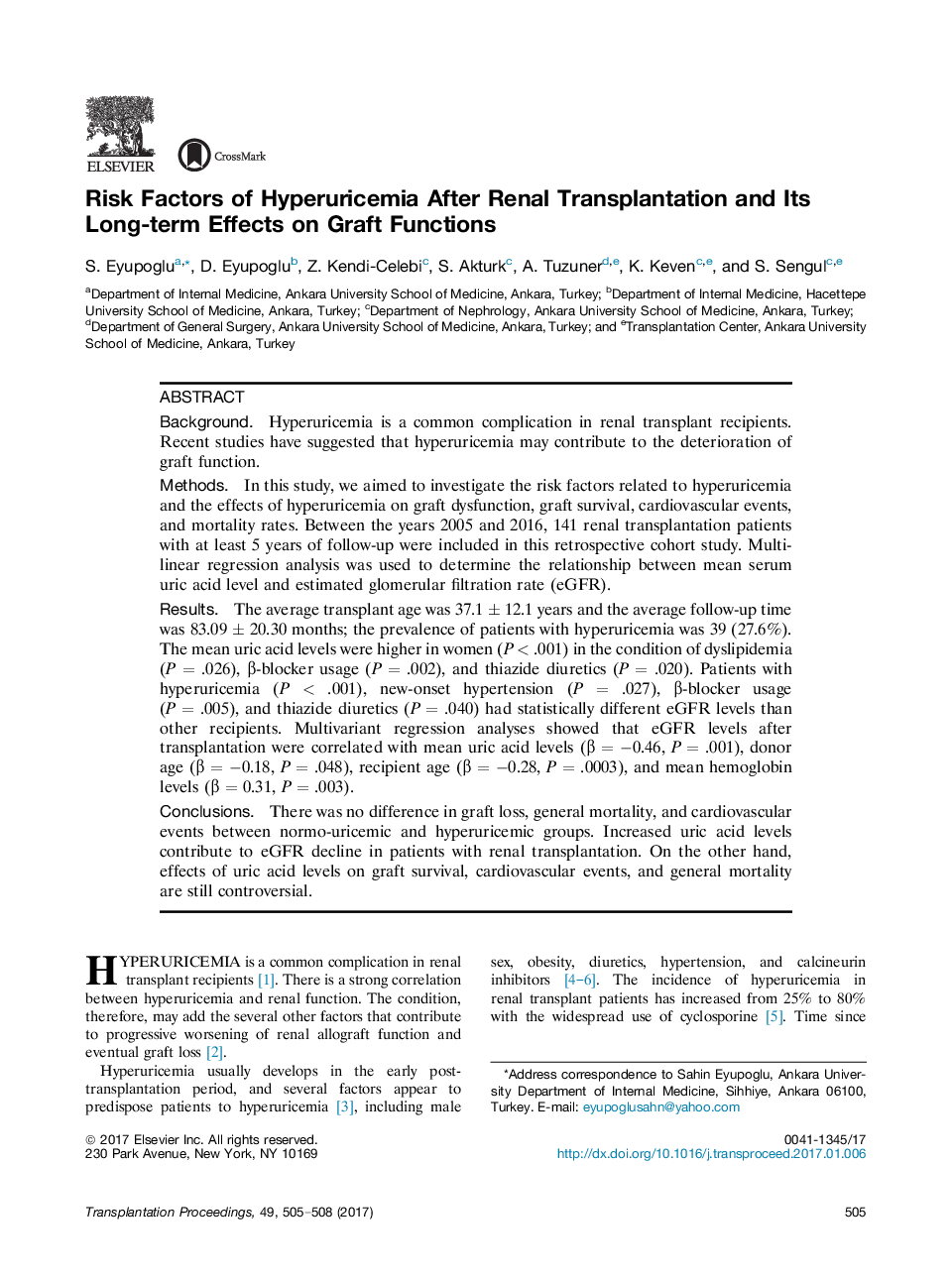| کد مقاله | کد نشریه | سال انتشار | مقاله انگلیسی | نسخه تمام متن |
|---|---|---|---|---|
| 5728865 | 1411672 | 2017 | 4 صفحه PDF | دانلود رایگان |
BackgroundHyperuricemia is a common complication in renal transplant recipients. Recent studies have suggested that hyperuricemia may contribute to the deterioration of graft function.MethodsIn this study, we aimed to investigate the risk factors related to hyperuricemia and the effects of hyperuricemia on graft dysfunction, graft survival, cardiovascular events, and mortality rates. Between the years 2005 and 2016, 141 renal transplantation patients with at least 5 years of follow-up were included in this retrospective cohort study. Multi-linear regression analysis was used to determine the relationship between mean serum uric acid level and estimated glomerular filtration rate (eGFR).ResultsThe average transplant age was 37.1 ± 12.1 years and the average follow-up time was 83.09 ± 20.30 months; the prevalence of patients with hyperuricemia was 39 (27.6%). The mean uric acid levels were higher in women (P < .001) in the condition of dyslipidemia (P = .026), β-blocker usage (P = .002), and thiazide diuretics (P = .020). Patients with hyperuricemia (P < .001), new-onset hypertension (P = .027), β-blocker usage (P = .005), and thiazide diuretics (P = .040) had statistically different eGFR levels than other recipients. Multivariant regression analyses showed that eGFR levels after transplantation were correlated with mean uric acid levels (β = â0.46, P = .001), donor age (β = â0.18, P = .048), recipient age (β = â0.28, P = .0003), and mean hemoglobin levels (β = 0.31, P = .003).ConclusionsThere was no difference in graft loss, general mortality, and cardiovascular events between normo-uricemic and hyperuricemic groups. Increased uric acid levels contribute to eGFR decline in patients with renal transplantation. On the other hand, effects of uric acid levels on graft survival, cardiovascular events, and general mortality are still controversial.
Journal: Transplantation Proceedings - Volume 49, Issue 3, April 2017, Pages 505-508
